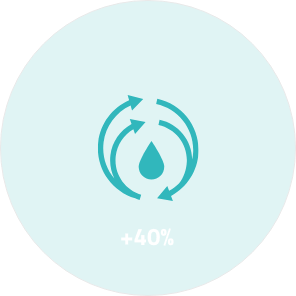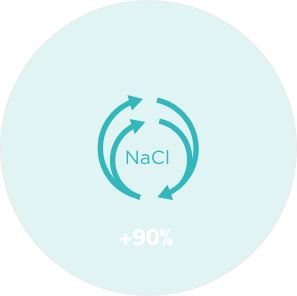The CS6 is a large-scale demonstration for closed-loop water recovery that will be developed at the industrial cluster of Rotterdam Port in the Netherlands. The demonstration involves the chlorine cluster of the area, with the large demo installed at the plant site of NOBIAN/Westlake Epoxy?s in Pernis. In this Industrial Mining case study, the salt wastewater (or brine) from Westlake Epoxy?s plant, is treated with the aim to produce high purity brine which can be a source of salt and water for Nobian?s nearby
Chlor-Alkali plant. The purified brine could partially replace mined salt and freshwater in Chlor-Alkali, reducing the water consumption by 1/3, saving 25 MWh thermic and 6 kilotons of CO2, at full scale. The process is truly circular as the chlorine produced from the waste brine is in turn used by Westlake Epoxy in its epoxy production. In this loop, the chlorine molecule can be considered as a ?chemical lease product.? The demonstration is planned to be set up between June 2022 and June 2023 with a skid-based treatment unit with a capacity of 0.1-2 m3/h, designed by the Austrian firm KVT, which applies high pressure oxidation (HPO) to convert the organic impurities in the waste brine into CO2. Application tests of the treated brine will be performed by Nobian.
Main challenges
1.
Approval of purified industrial brine for Chlor-Alkali electrolysis
2.
Developing and optimizing the treatment train to reduce costs
3.
Business case and business model including logistic or infrastructural solutions for full scale










